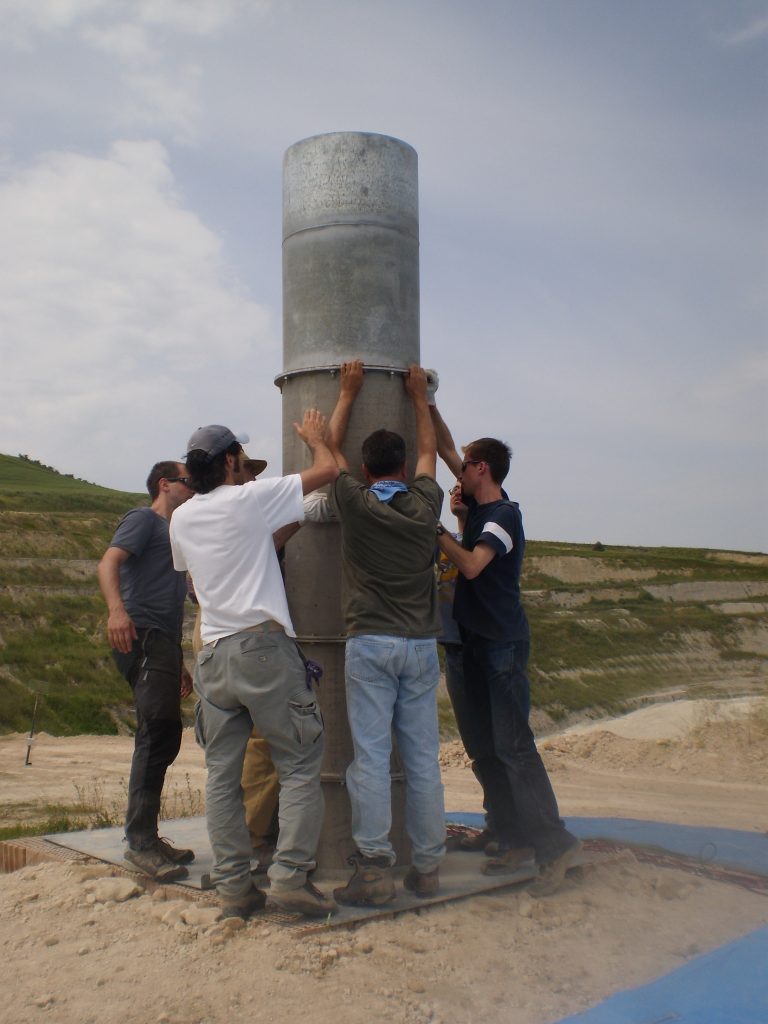Description of entrainment
While 1D models have provided useful insights, it is clear that especially ash plumes of weak and moderate eruptions are considerably affected by wind. Therefore, in recent years research has focused on the “wind problem”, resulting in a number of models for bent-over plumes. Yet, the prediction of these models show a considerable deviation and are characterized by large error margins [1].
All numerical 1D models derived from the Morton et al. [2] theory describe the complex process of turbulent entrainment through a simple entrainment coefficient. While classic models only consider radial entrainment quantified by the dimensionless coefficient α other models, starting from experimental findings of pollutants dispersion [3], introduce a wind entrainment coefficient β, which accounts for the contribution of wind in the case of bent-over plumes. Although recent analyses of both lab-scale experiments and natural bent-over plumes have provided intersting new insights and constraints [4], there is still uncertainty on what the numerical values of α and β should be and on how these coefficients are related to one another. This discrepancy, together with uncertainties of source conditions, affects the outputs of plume models and therefore of ash dispersal forecasts.

Preparing the ash plume generator during the Spinazzola runs. This "BFG" was filled with up to 300 kg of heated ash, which subsequently was ejected by pressurized gas.
The large-scale "ash gun" experiments (internally referred to as "BFG runs") used heated ash to investigate the dynamics of eruptive columns. These runs helped to constrain the plume dynamics and in particular the radial entrainment coefficient α by means of video analysis [5].
In 2014, we also produced artificial ash plumes under known wind conditions during slightly smaller runs in Würzburg, that used three "guns" instead of one .
The beauty of these "gun" type of experiments (besides the convenient fact that we can schedule an eruption right in time after having a beer or whenever we want) is that we know to the gram how much ash has been ejected. By reconstructing the volumetric changes of the plume body we can therefore assess the changes in volumetric concentration (and from that derive the volume of entrained air).

Ash plume generated by the BFG at Spinazzola. For this particular plume, 60kg of 300°C hot Astroni ash was ejected. (Details can be found in [5].)
-> next challenge: unsteady source conditions
References and annotations:
[1]: see, for example: Devenish, B. J., Francis, P. N., Johnson, B. T., Sparks, R. S. J. & Thomson, D. J. Sensitivity analysis of dispersion modeling of volcanic ash from Eyjafjallajökull in May 2010. J. Geophys. Res. 117, D20 (2012).
[2]: Morton, B. R., Taylor, G. & Turner, J. S. Turbulent Gravitational Convection from Maintained and Instantaneous Sources. Proceedings of the Royal Society A: Mathematical, Physical and Engineering Sciences 234, 1–23 (1956).
[3]: Hewett, T. A., Fay, J. A. & Hoult, D. P. Laboratory experiments of smokestack plumes in a stable atmosphere. Atmospheric Environment (1967) 5, 767–789 (1971).
[4]: Aubry, T.J. & Jellinek, A.M. New insights on entrainment and condensation in volcanic plumes: Constraints from independent observations of explosive eruptions and implications for assessing their impacts. Earth Planet. Sci. Lett. 490, 132-142 (2018).
[5]: Dellino, P. et al. Volcanic jets, plumes, and collapsing fountains: evidence from large-scale experiments, with particular emphasis on the entrainment rate. Bull. Volcanol. 76 (6) 834 (2014).
[6]: Devenish, B. J., Rooney, G. G., Webster, H. N. & Thomson, D. J. The Entrainment Rate for Buoyant Plumes in a Crossflow. Boundary-Layer Meteorol 134, 411–439 (2010).
